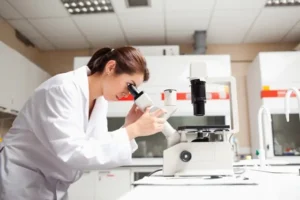 Breast cancer is considered the type of cancer with the most therapeutic options. Treatment is personalized for each patient according to histological grade, the patient’s age, the stage of the disease, and other factors.
Breast cancer is considered the type of cancer with the most therapeutic options. Treatment is personalized for each patient according to histological grade, the patient’s age, the stage of the disease, and other factors.
In early-stage breast cancer (stages 1 and 2), treatment often includes surgery (known as lumpectomy) to remove the tumor tissue and prevent metastasis.
Several forms of adjuvant therapy are offered to prevent cancer recurrence. Unfortunately, some of these procedures, especially chemotherapy, carry severe side effects. For this reason, it is of utmost importance to determine whether the patient will benefit from aggressive adjuvant therapy before choosing this option.
Why do some women suffer from breast cancer recurrence?
Recurrent breast cancer is cancer that returns after treatment. Recurrence is not always local (in breast tissue) and sometimes occurs in other areas of the body (this is known as distant recurrence). In cases when metastasis has occurred at a later stage, cancer cells may have spread into the blood stream before lumpectomy. These cells can multiply and cause cancer recurrence.
Chemotherapy is intended to destroy all trace of cancer cells and prevent metastasis.
The MammaPrint test is suitable for patients with stage 1 or 2 of cancer, with an invasive tumor under 5 centimeters large.
Recurrence risk assessment methods
In the past, recurrence risk assessment was based on various pathological and clinical criteria, such as the size and type of tumor, the condition of the lymph nodes, the patient’s age and hormone receptor status.
Combining these criteria provided a rough estimate of the risk for recurrence, which helped determine adjuvant therapy.
The MammaPrint test is a breakthrough in recurrence risk assessment in early-stage breast cancer patients after surgery. This test genetically screens cancer cells removed from the breast tissue.
The test analyzes 70 different genes associated with breast cancer recurrence and metastasis.
Results help physicians assess the risk for recurrence more accurately and prevent unnecessary suffering resulting from chemotherapy.
This test can also detect a need for adjuvant chemotherapy in women who do not meet classic criteria for high-risk recurrence. For instance, according to histological criteria, chemotherapy is usually not recommended to patients with a tumor smaller than 5 centimeters and no involvement of the lymph nodes. In these cases, the MammaPrint test may help detect a high risk of metastasis and indicate the need for adjuvant therapy.
Results
Test results are obtained dichotomously and classify subjects into two groups by reporting either “high risk” or “low risk”.
This contrasts with another genomic test called “Oncotype” that provides a graded scale of risk broken into three groups: low, intermediate, or high risk.
While Oncotype is only relevant to women with cancer that is estrogen receptor-positive, MammaPrint is suitable for women regardless of their estrogen-receptor status. Around 20% of breast cancer cases are estrogen receptor negative.
The MammaPrint test can assess the risk for recurrence within ten years after surgery.
How is the test performed?
The test is performed on a cancer tissue sample that was removed during surgery. The sample is sent to a laboratory that analyzes whether the sample contains enough cancer cells for conducting the MammaPrint test. If the sample proves suitable it is screened using a DNA microarray that tests the genes relevant to metastasis.

